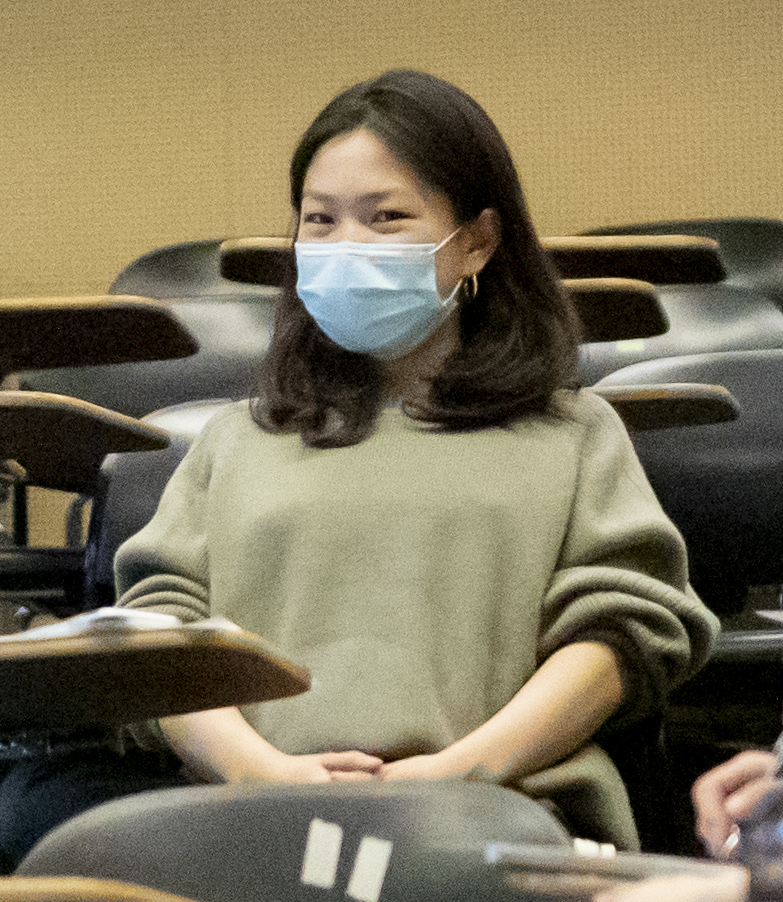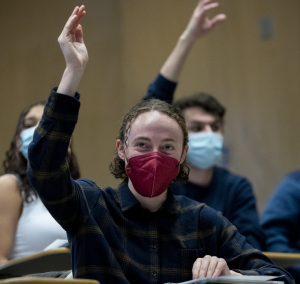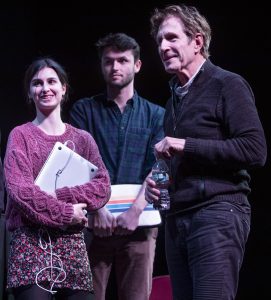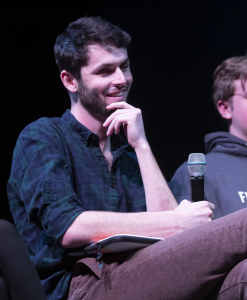By Gene Chen (BFF 2022, Bates Class of 2022)

In 2022, one of the most exciting additions to the Bates Film Festival was our partnership with Neon, a leading production and distribution company renowned for its involvement in some of today’s most refreshing and exciting independent films. The partnership with Neon led to BFF screenings of three remarkable movies: The Worst Person in the World, an award-winning and beloved Norwegian dark rom-com; Petite Maman, a heart-warming and tender piece from Celine Sciamma, one of the most prominent woman filmmakers working today; and Memoria, an immersive cinematic experience directed by the exceptionally talented Apichatpong Weerasethakul. None of these films was made in the US. All of them were critically acclaimed, and each attracted the interest of our audience. These prestigious films allowed us to balance and achieve two of our festival goals. We offered a slate of films that foregrounded cutting-edge cinematic artistry, and we attracted large audiences.

In his discussion of the Sundance Film Festival, Los Angeles Times film critic Kenneth Turan points out that the festival’s dramatic competition, which many consider to be the most important part of Sundance, is becoming a flaw rather than an asset. Turan identifies an increasing disconnect between films and audiences. He suggests that the festival favors a “narrow and outmoded aesthetic agenda,” and that, in turn, fosters an awkward relationship with the festival’s audience. Turan believes that overly-artsy films (for lack of a better term) won’t reach a wide audience outside of the rarified air of Sundance (45-46). He is obviously disappointed by what he sees as Sundance’s choice to conform to “artistic elitism,” and he frames the festival as stubbornly insisting on an “unmistakable anti-commercial bias.” Turan holds that while film selections like those described above appear to celebrate the pure artistry of film, in reality, they disadvantage independent movies. For Turan, the festival landscape features films that fall into two opposing categories: (1) commercial films that do not necessarily advance film artistically and (2) sensitive, artistic films that might not attract a popular audience.

If we apply Turan’s criteria to the three Neon films from this year’s BFF, we see the limits of his perspective. I believe that each of the films successfully navigates what Turan more or less frames as irreconcilable. The Worst Person in the World, Memoria, and Petite Maman balance artistry and commercialism, and their ability to strike that balance made them particularly attractive to us as BFF programmers. For example, as an independently-made, Nordic film, The Worst Person in the World, at its core, touches on the universal dilemma of being a young woman at the crossroads of life. The film has an appeal that can transcend an audience’s geographic location or their stage in life. Worst Person’s form and its use of cinematic language suit its larger themes, and the resulting movie is both funny and sentimental, bright and dark, and controversial and conventional. Our audience was drawn to the film. It generated the largest turn-out at this year’s festival, and ballots for our audience award showed that the film was loved by those who saw it. We screened the film both in Freeport and on campus, and it was by far the most popular movie among our student audience.

Beyond their own merits, the addition of the Neon films balanced the BFF’s narrative film slate in general. They provided a chance to see mature, foreign language films – an opportunity that would have been lacking in our program otherwise (and one that is almost non-existent in local theaters). Memoria, for example, provided our audience with a picture of the future of world cinema. In the film, language barriers and cultural boundaries become ambiguous. Initially, we worried that our audience might not embrace Memoria, because it is a film that is unique in perspective, elusiveness in theme, and told in a style that breaks with many conventions. However, tickets to the screening approached “sell out” quickly, and the film sparked a robust conversation led by Bates Philosophy Professor Paul Schofield. The event served as a wonderful example of people loving a film that many admitted to not fully comprehending. Their collective search for understanding allowed them to better appreciate the film and emphasized the value of watching a movie with an audience and discussing a work of art as a community.
“The inclusion of three Neon films spoke to our festival mission statement, which charges the festival and BFF programmers with fostering an appreciation for the artistry of screen media.”
The inclusion of three Neon films spoke to our festival mission statement, which charges the festival and BFF programmers with fostering an appreciation for the artistry of screen media. These movies were valued because of their subject matter, their distinctive styles, and the fact that they showcase the voices of some of world cinema’s best filmmakers. We were proud to screen these films on big screens; we know our audience appreciated that opportunity, and we feel fortunate to have worked with Neon, who provided access to three movies that helped us to achieve our goals of reaching a wide audience with artistic, brilliant movies.
Works Cited
Turan, Kenneth. “Sundance.” In From Sundance to Sarajevo: Film Festivals and the World They Made. 31-48. Berkeley: University of California Press, 2002.






